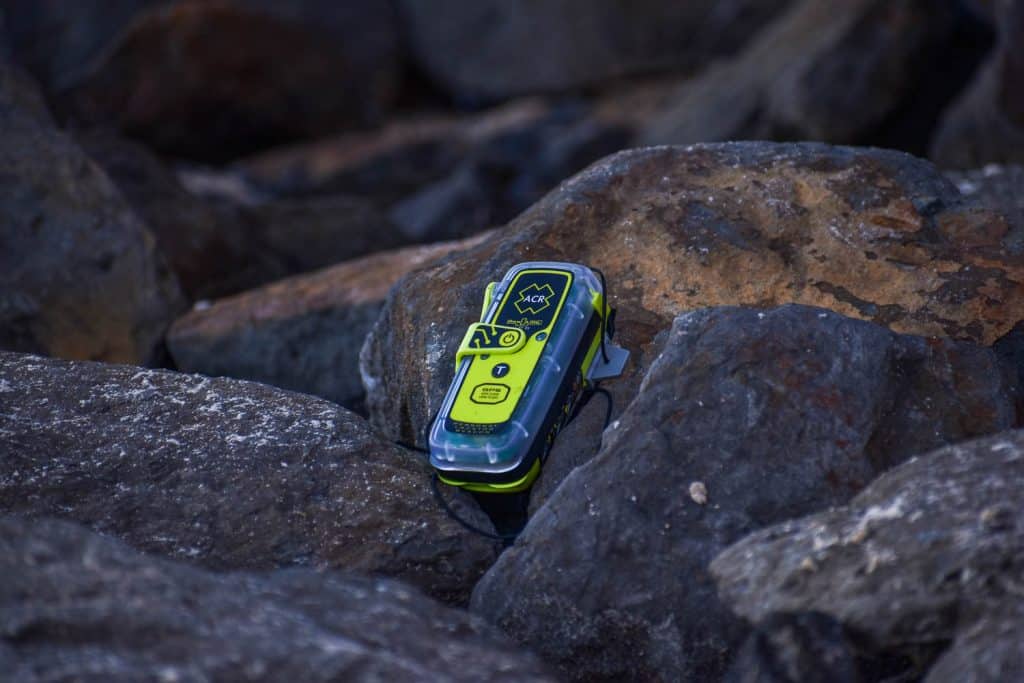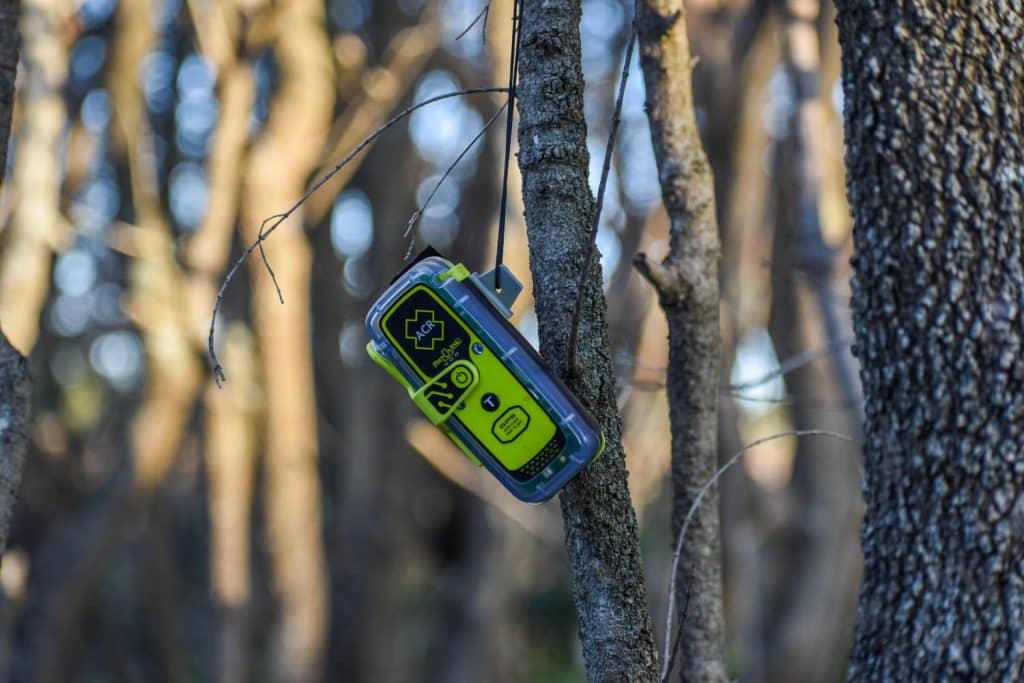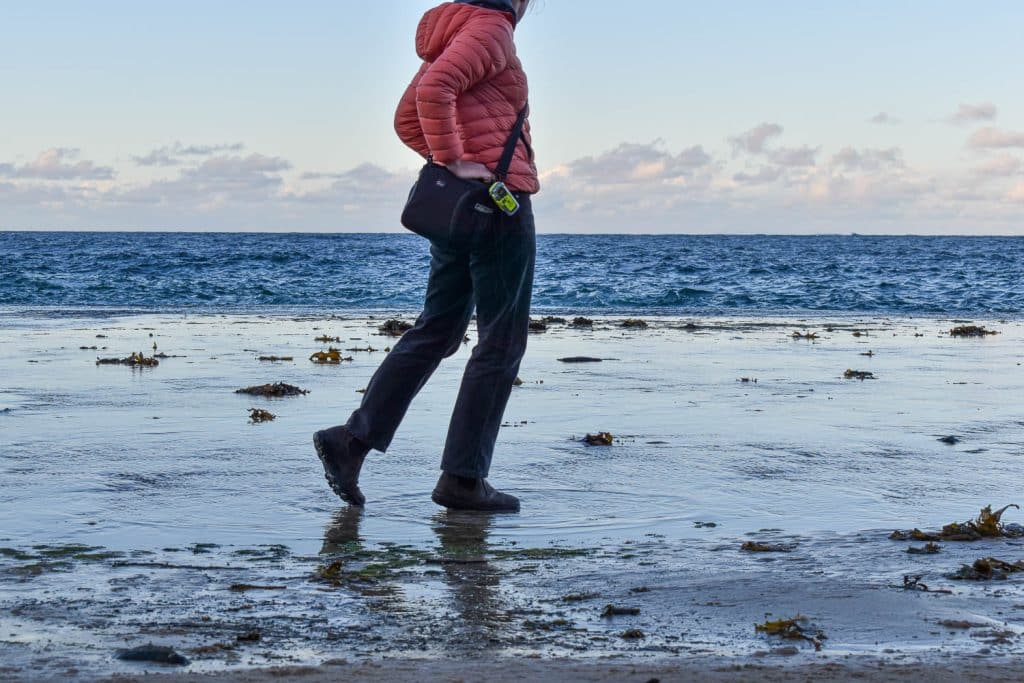Why a PLB is essential for outdoor adventures in Australia




We bought a Personal Locator Beacon (PLB) to travel around Australia and I was so grateful for the peace of mind that if something went wrong, I would be able to get help. That safety net gave us the confidence to tackle bigger adventures like multiday hikes and remote 4WD camping. Not that we did anything dangerous, but it gave us peace of mind while we were living a great life on the road.
Now that I’m home, I still take it plenty of places. My rule is if I’m going on a walk longer than 1km with no phone service, I take my PLB.
If you’re on the fence, have a listen to this harrowing experience of Aussie woman Claire Nelson who fell off some rocks and broke her pelvis on a walk in Joshua Tree National park. She had to lay in the sun for days waiting for someone to realise where she was. It’s an incredible survival story and a great lesson on why you should always take a PLB. It doesn’t matter how experienced you are!
A PLB is important in Australia because we can’t always rely on mobile phones, particularly in the outback.
A PLB is an electronic device capable of sending out a distress signal. This allows you to be located and rescued in a life-threatening situation.
Once a PLB is activated in Australia, the distress signal is picked up by the international search and rescue satellite system called “Cospas-Sarsat”. This satellite system then sends that distress signal down to the nearest ground station. Next, it is relayed to the Joint Rescue Coordination Centre (JRCC) in Canberra. From there, the JRCC will identify your position, call your emergency contacts and liaise with local search and rescue to get you back to safety.

Definitely not. While any distress beacon is better than none, there are some key differences in the options available.
Your basic PLB can have GPS or no GPS and in general, GPS is the better option in Australia. This is because it’s far more accurate in determining your location, allowing rescuers to find you faster. With GPS, rescue services determine your location within a 120-metre radius in around 10 minutes. With no GPS signal, they will only be able to determine your location within a 5km radius. So if you’re in thick bush or difficult terrain, it’s going to take much longer.
For both of these options, all you can do is activate a distress call. However, if you want to communicate more effectively while you’re out adventuring, consider investing in a satellite messenger instead.
A satellite messenger is a PLB with the added feature of being able to send messages out to emergency services or loved ones. They use a separate satellite network for this service so you have to pay an extra subscription to use it. This can help you communicate your position, the reason for your distress and any required assistance, thus enabling emergency services to scale their response to your situation.
Some satellite messengers allow two-way communication where emergency services can confirm they’ve received your message, update you on their estimated arrival and give instructions on what to do until they arrive.
These are also great if you need help in a non-life-threatening situation. Perhaps your vehicle is broken down in a remote area and you need to be picked up, or you are delayed and spending an extra night out camping but need to let someone know you’re okay. If you frequently head out for extended trips on your own this could be a perfect option.

There are also distress beacons called EPIRB’s that are only for use in the water. These are registered to a boat and not an individual person.
Note – 121.5 MHz distress beacons are no longer detected by satellites and are no longer licensed for use.
Before you take off on an adventure, Register your beacon online with your personal and emergency contact information. This way, if it’s activated, emergency services can call and find out more information on who you are, where you are and what supplies you have with you while determining your exact location.
PLB’s should only be activated if you feel you are in a life-threatening situation. Once activated, leave the PLB on and in one place in a clear, open area with the aerial pointing vertically towards the sky. If you can, put it in a location with 180 degrees or more of visibility. It’s ideal to place it away from trees, buildings, mountains, or vehicles, and at the highest point that you can.
It can take some time for emergency services to locate you but the battery will last for at least 24 hours. If you have more than one PLB in your group, only activate one at a time. This allows you to save the battery on the second one for when the first one runs out.
Should your beacon accidentally activate, switch it off immediately and contact the Australian Maritime Safety Authority (AMSA) on 1800 641 792. There is no penalty for accidental activation.
Your PLB should be strapped to the outside of your gear or somewhere within easy reach like the glovebox. If you get into a life-threatening emergency, you don’t want to be digging into the depths of your backpack to find it. Ditto with a first aid kit! Both of these should be obvious and visible to others in case you’re not in a position to use it yourself or explain where it is.

You can buy a PLB in Australia in most camping, adventure or 4WD stores. However, there are plenty of options online as well. They cost around $200 – $500 as a base price and more if you’re adding a satellite messenger subscription.
PLB’s are guaranteed to have a battery that will last for 5 years. This is plenty of time to have heaps of adventures and get your money’s worth. At the end of its life, make sure you dispose of it properly to avoid it activating in landfill.
It’s also possible to rent them from some companies or even from National parks. This is a great option if you only go on occasional trips or want to try it before you buy.
Now that you’re prepared, you can get out there and tackle all those epic adventures with peace of mind. Hopefully, you’ll always have a PLB with you and never have to use it.